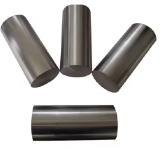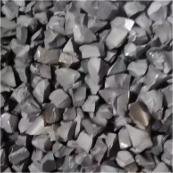The Unbending Truth: Which Metal Plates Laugh at Heat?
(What Metal Plate Will Not Warp When Heated)
Ever tried bending metal with heat and ended up with a twisted mess? Maybe you’ve watched a DIY project go sideways when your carefully cut steel plate curled like a potato chip. Heat warps metal—it’s basic science. But what if you need a plate that stays flat no matter how hot things get? Let’s talk about the metals that refuse to budge, even when the heat is on.
First, stainless steel. This stuff is tough. You’ve seen it in kitchen sinks, grills, and even skyscrapers. Stainless steel has chromium, which forms a sneaky invisible shield against heat and rust. Heat it up, and it expands way less than regular steel. That means less bending, less warping. It’s why your grandma’s old frying pan survived decades of bacon grease and campfire cooking. But even stainless steel has limits. Crank the temperature too high, and it’ll eventually throw a fit.
Then there’s titanium. This metal is the superhero of the materials world. Light as aluminum but strong as steel, titanium laughs at heat. Jet engines use it because it doesn’t care about blazing temperatures. Titanium’s secret? It spreads heat evenly, so no single spot gets stressed enough to warp. It’s also stubborn about expanding—barely changes shape when heated. But titanium isn’t cheap. Unless you’re building a spaceship or a luxury watch, you might stick with something simpler.
Now meet tungsten. If metals had a heavyweight contest, tungsten would crush the competition. It has the highest melting point of any metal—over 3,400°C. That’s hotter than lava. Tungsten doesn’t just resist warping; it practically ignores heat. Welding electrodes and rocket parts use tungsten because it stays solid when everything else turns to soup. But tungsten has a personality flaw: it’s brittle. Hit it with a hammer, and it might shatter like glass. So it’s great for heat, terrible for impact.
What about everyday fixes? Maybe you’re welding a gate or fixing a car part. In these cases, even warp-resistant metals need help. Preheating the metal gently can ease stress. Clamping it down during cooling keeps it flat. Sometimes adding grooves or ridges helps it handle heat without bending. It’s like giving the metal a yoga routine—stretch it right, and it stays flexible under pressure.
But why does metal warp anyway? Heat makes atoms vibrate and push apart. If one part of the plate heats faster than another, expansion gets uneven. The hotter side stretches, the cooler side resists, and boom—the metal bends. Metals that expand slowly and evenly, like stainless steel or titanium, avoid this drama. Metals with high melting points, like tungsten, don’t even flinch until temperatures hit nightmare levels.
So next time you’re picking metal for a high-heat job, think about the task. Need something affordable and reliable? Stainless steel’s your buddy. Building something that needs to fly through flames? Titanium’s worth the cash. Dealing with temperatures that melt steel beams? Tungsten won’t let you down. Just remember: no metal is perfect. Each has quirks, but knowing their strengths turns warping from a headache into a solvable puzzle.
(What Metal Plate Will Not Warp When Heated)
And if all else fails? Clamp it, cool it slowly, or call a pro. Heat might be a metal’s nemesis, but with the right tricks, you can keep your projects straight and steady.
Inquiry us
if you want to want to know more, please feel free to contact us. (nanotrun@yahoo.com)


